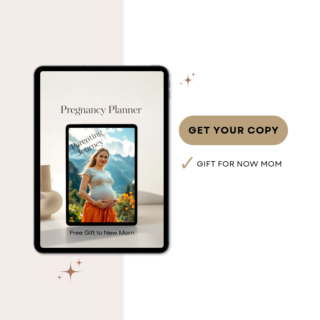Category
Recent Comments
Shop Categories
-
 Baby & Maternity22 products
Baby & Maternity22 products -
 Beauty & Health22 products
Beauty & Health22 products -
 Books & Media22 products
Books & Media22 products -
 Cell Phones & Accessories11 product
Cell Phones & Accessories11 product -
 Colors11 product
Colors11 product -
 Digital Products22 products
Digital Products22 products -
 Featured44 products
Featured44 products -
 Fun11 product
Fun11 product -
 Health & Household33 products
Health & Household33 products -
 Jewelry & Accessories22 products
Jewelry & Accessories22 products -
 Kids' Fashion11 product
Kids' Fashion11 product -
 Preschool Learning11 product
Preschool Learning11 product -
 Sports & Outdoors33 products
Sports & Outdoors33 products -
 Toys & Games22 products
Toys & Games22 products -
 Most Popular66 products
Most Popular66 products -
 New Arrival55 products
New Arrival55 products -
 On Sale77 products
On Sale77 products
Popular
-
 Free Parenting Journey Planner: Doctor Visits & Baby Prep
Free Parenting Journey Planner: Doctor Visits & Baby Prep
5.00 $Original price was: 5.00 $.0.00 $Current price is: 0.00 $. -
 Top 10 Preschool Coloring Book Bundle
Top 10 Preschool Coloring Book Bundle
50.00 $Original price was: 50.00 $.14.99 $Current price is: 14.99 $. -
 86pcs/set Elegant Retro Earrings, Multi-layer Necklace, Earrings, Rings, Four-in-one Multi-piece Jewelry Set for Women, Ideal for Daily Outing, Commuting, Mother's Day, Valentine's Day Gifts, No Box
Rated 5.00 out of 5
86pcs/set Elegant Retro Earrings, Multi-layer Necklace, Earrings, Rings, Four-in-one Multi-piece Jewelry Set for Women, Ideal for Daily Outing, Commuting, Mother's Day, Valentine's Day Gifts, No Box
Rated 5.00 out of 514.99 $Original price was: 14.99 $.4.17 $Current price is: 4.17 $. -
 Smiling in the Sky Kite with Free Flying String - Durable Polyester, Mixed Colors, Perfect for Outdoor Fun
Rated 5.00 out of 5
Smiling in the Sky Kite with Free Flying String - Durable Polyester, Mixed Colors, Perfect for Outdoor Fun
Rated 5.00 out of 56.99 $Original price was: 6.99 $.1.35 $Current price is: 1.35 $. -
 Chic Girls' Summer Outfit Set: Strawberry Embroidered Off-Shoulder Top & Heart Belted Shorts - Breathable Polyester, Machine Washable, Perfect for Outdoor
Rated 5.00 out of 5
Chic Girls' Summer Outfit Set: Strawberry Embroidered Off-Shoulder Top & Heart Belted Shorts - Breathable Polyester, Machine Washable, Perfect for Outdoor
Rated 5.00 out of 519.89 $Original price was: 19.89 $.6.39 $Current price is: 6.39 $. -
 1pc Frameless Oversized Gradient Fashion Glasses for Women, Polygonal Metal Hinge, PC Lens, Fashionable UV Protection Eyewear for Outdoor Activities
Rated 5.00 out of 5
1pc Frameless Oversized Gradient Fashion Glasses for Women, Polygonal Metal Hinge, PC Lens, Fashionable UV Protection Eyewear for Outdoor Activities
Rated 5.00 out of 53.47 $Original price was: 3.47 $.2.05 $Current price is: 2.05 $.
Tag Clouds


Ever thought living within your means could make life more fulfilling? It’s not about following every new trend or spending a lot. Financial freedom is not just about making a lot of money or spending a lot. It’s about learning to spend and save wisely.
This journey is not about cutting back on everything. It’s about finding a balance that makes you happy and stress-free. It’s about living a life that feels right, not one that’s full of worry about money.
Key Takeaways
- Understanding the benefits of living below your means enhances financial security.
- Financial freedom is achievable through mindful spending and saving habits.
- Intentional living promotes joy instead of feeling deprived.
- Creating a budget is a key step to achieving financial independence.
- A positive mindset changes how you view personal finance.
The Joy of Living Below Your Means
Living below your means brings joy and a fulfilling life. It’s about *mindful spending*. This way, you enjoy the simple things in life, not just buying more.
It’s not about being poor. It’s about freedom. You use your money for what truly makes you happy.
Intentional spending is key. It means spending money on what you value. This makes you appreciate what you already have.
It reduces stress and makes you happier. You stop wanting things you don’t need. This leads to true financial freedom.
Defining Financial Freedom

Financial freedom is more than just money in the bank. It’s about living life your way, without money worries. Knowing what financial freedom means to you starts your journey with purpose.
Smart money habits are key to getting there. Start by checking your income and spending. Find ways to save without losing out on life’s joys.
Financial freedom is about balance. You need to cover basics, enjoy life, and save for surprises. And, you must avoid debt.
Budgeting for Success

Effective budgeting is like a roadmap to financial stability. It helps you plan your money by matching what you earn with what you spend. This way, you focus on what’s really important first.
Using budgeting tips can help you keep track of your spending. This lets you understand your spending habits better. Knowing this helps you make smart choices about your money.
Setting realistic goals is key in budgeting. It’s important to know the difference between needs and wants. This makes your financial plan clearer.
It’s also good to check and change your budget often. This keeps it working well, even when your money situation changes. Using budgeting tools or apps can make this easier. They help you stay on track to financial freedom.
Living Well Within Your Means: Cultivating Financial Freedom and Intentional Spending

To really thrive, you need to focus on financial freedom and smart spending. This way of thinking helps you enjoy life more and manage your money better. It’s about using a “joy scale” to see what makes you happy.
Spending on what matters to you helps you avoid wasting money. It’s easier to tell what you need versus what you want. This way, you get to enjoy more and save more too. Feeling in control of your money makes every dollar count.
Mindful Money Management Strategies

Being mindful with money lets you link your spending to what matters to you. Keeping track of your money helps you see where it goes. Saving regularly helps you build a safety net and reach your goals.
Looking for ways to spend less can save you a lot. This makes your money journey easier and more sustainable.
Learning more about money is key to using these strategies well. Books, websites, and workshops offer great advice. By learning, you make better choices and secure your financial future.
Smart Saving Strategies

Starting your journey to financial freedom needs good planning and smart saving. Building a strong savings base helps you reach your goals. Start by automating your savings with each paycheck. This makes saving easy and automatic.
Having an emergency fund is key to handle unexpected costs. Try to save three to six months’ worth of living costs. This way, you can keep going even when surprises come up. Setting savings goals helps you stay on track and excited about your future.
Using the “pay yourself first” rule helps you save before spending. It makes saving a must-do in your budget. Also, checking your spending often can show ways to save more. This way, you can reach your goals without giving up your lifestyle.
These strategies help you deal with emergencies and work towards your dreams. Saving now means a better future. It shows your commitment to a smart financial plan.
Frugal Living Tips for Everyday Life

Adding frugal living tips to your daily life can change your money situation. It lets you enjoy life without spending too much. Simple steps can make you live frugally.
Try meal prepping to save on food costs. Planning meals saves money and cuts down on waste.
Look for sales and discounts to spend wisely. Watching for deals makes shopping fun. It’s not just about saving money.
Living simply is key to a frugal life. Buy only what you really need. This way, you have less stuff and feel happier.
Find free or cheap fun in your area. Go to local events or explore nature. These activities are fun and don’t cost much.
Being frugal makes you creative and resourceful. Try new hobbies or learn DIY skills. This adds joy to your life and keeps costs down.
Focus on what’s important to you. This way, you can live a happy, fulfilling life. Frugal living tips can make you happier and more content.
Embracing Intentional Spending Habits

Intentional spending habits help you control your money. You make choices that match your values and goals. Knowing what’s worth buying is key.
Try the 24-hour rule. Wait a day before buying something you don’t need. This helps you decide if it’s really worth it.
Checking your spending often helps too. It shows where you might be spending too much. Smart money habits lead to better financial health. They let you spend on things you love without breaking the bank.
Steps to Achieve Financial Independence

Getting to financial independence can seem hard. But, breaking it down makes it easier. Start by thinking about what financial freedom means to you. This will help guide your steps and keep you going.
Then, make a detailed budget. This will track your money coming in and going out. Look for ways to cut costs. This will help you save more and invest wisely. Having goals, both short and long-term, keeps you on track.
Reducing debt is key to financial freedom. Plan to pay off high-interest debts first. This will free up money for saving and investing. Learning more about money management helps a lot.
Lastly, find support from friends or online groups. Being with others who are also working towards financial freedom can be very helpful. With the right plan and support, you can reach a secure financial future.
Conclusion
Living well within your means is a big step towards true financial freedom. It means spending wisely and saving smartly. This way, you build a financial life that’s good for now and the future.
When you start this journey, remember to enjoy the simple things. Saving money can make your life richer in ways you can’t measure. It brings peace of mind and lets you use your money without worry.
Financial freedom is within reach if you stay focused and disciplined. Share your knowledge with others to help them too. The hard work pays off with financial security and freedom.
FAQ
What does it mean to live well within your means?
How can I cultivate financial freedom?
What are some effective budgeting tips for success?
What are mindful money management strategies?
How can I practice intentional spending?
What are some smart saving strategies I can implement?
How can frugal living enhance my financial health?
What does financial independence look like?
Written by lana saleh
Best offers
Join Risk Free
Subscribe Now
100% Safe
Secure Shopping
24x7 Support
Online 24 hours
Best Offers
Grab Now
Free Shiping
On all order over
Know Us

Your go-to online destination for inspiration, guidance, and resources across various aspects of daily living, covering topics like wellness, style, home, relationships, personal development, and more, all aimed at helping you cultivate a fulfilling and intentional life
Read MoreRecent Posts









































Product Showcase















